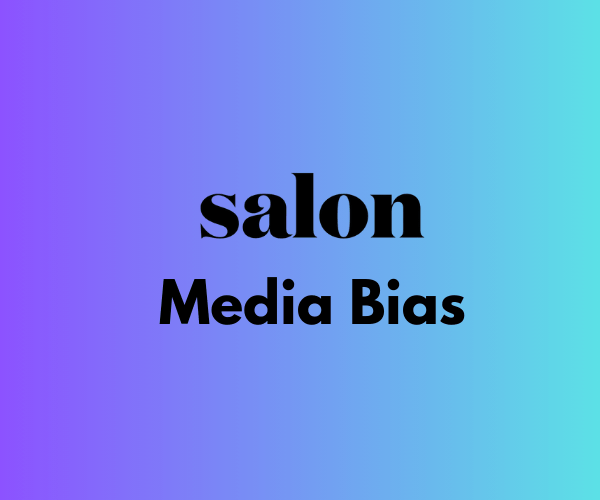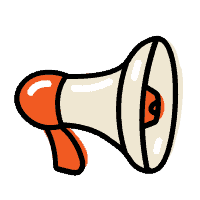
In its early days in 1995, Salon emerged as a notable news source on the burgeoning internet, attracting people seeking information on a wide range of issues. Salon publishes content about various topics such as politics, health, and science across the United States. Their website indicates that Salon is an independent magazine using a nonpartisan lens and aims to answer big questions regarding different issues. Despite its relatively new history, Salon receives attention from the public.
Even though it’s claimed that Salon is a progressive and politically independent website, the issue of whether Salon is biased needs further investigation. According to data provided by the Salon, 76% of readers are college-educated, at a median age of 36 with a predominantly male background.
In this article, we will analyze the newspaper’s coverage and editorial decisions to determine if there is a noticeable political bias in their reporting. Through our analysis, we hope to provide a comprehensive answer to whether the Salon is biased and illuminate the factors contributing to media bias.
How Does Biasly Rate News Sources?
Biasly’s algorithms produce bias ratings to help provide multiple perspectives on given articles. Biasly has analyzed 200,000+ news articles from more than 3,200 news sources through our A.I. technology and team of political analysts to find the most factual, unbiased news stories.
Biasly determines the degree of political bias in news sources by using Biasly’s Bias Meter Rating, in which Biasly’s team analyzes media sources’ reliability and bias and produces three scores, a Reliability Score that measures the accuracy of media sources; an A.I. Bias Score, evaluated by A.I.; and an Analyst Bias Score evaluated by political analysts. These scores are rated based on seven rating metrics including Tone, Tendency, Diction, Author Check, Selection/Omission, Expediency Bias, and Accuracy. These metrics help our analysts to determine the political attitude of the article.
Our A.I. a machine-learning system employs natural language processing and entity-specific sentiment analysis to examine individual articles and determine their bias levels. By analyzing the key terms in an article such as policies, bias phrases, political terminologies, politicians, and their nicknames, the algorithms can rate the attitude of the text. Bias scores range from -100% and 100%, with higher negative scores being more liberal and higher positive scores being more conservative, and 0% being neutral.
Is Salon politically biased?
Biasly’s rating for the Salon is based on two scores: one from its computer algorithms, which are based on AI, and one from its Analysts. Biasly rated Salon with a Computer bias score of Very Liberal and an Analyst bias score of Moderately Liberal, which means it provides political coverage from an American liberal political perspective. Analyst scores are based on an average of at least 15 articles reviewed by one liberal, moderate, and conservative analyst. The more articles Biasly’s analyst team rated for a particular source indicates a more accurate analyst score. As Biasly rates more articles, the scores will become more accurate. Praise for liberal politicians and policies, as well as dislike toward Republican policies and politicians, contribute to this rating. Biasly’s scores on the Salon align with determinations made by other third-party bias research agencies.
Readers like you are more inclined to have a strong opinion of The Salon based on your political leaning because they tend to favor liberal causes and people, as represented by Biasly’s “Very Liberal” rating. In the remainder of this article, we’ll discuss ways to identify this bias so you can separate the opinions from the facts and become a more informed news consumer.
Before we begin, we need to discuss bias. Bias is a natural function of humans, and we can express it both consciously and unconsciously. Bias is one of the most fundamental forms of pattern recognition in humans. This isn’t to lower the bar and say that “all things are biased,” but to explain the process in which we may come to trust certain news organizations that display patterns of coverage.
On the media’s part, there is an incentive to retain audiences, encourage them to purchase subscriptions, and rate products positively. Bias is a two-way street, people want to see news stories about things they care about, and the media needs viewers to continue their operations. This creates a positive feedback loop that influences what stories are covered and from what perspective. This also explains the actions of more liberal news organizations.
Analysis of Bias in Salon Online Articles
Salon acknowledged that its audience is well-educated and affluent, with an average household income of $92,000. 60% of the readers are male, whereas 40% are female.Given their educated and well-informed readership base, is the Salon biased? We’ll look at some of their articles below to identify the signs.
When determining bias, some of the most common metrics used include Tone, Author, and Diction, the primary metrics we’ll focus on below. Tone refers to the attitude found in the writing and is related to but distinct from diction, which is mostly focused on the extremity of the writer’s word choices. The Author metric refers to the author of the article and their demonstrated stance on issues through past articles and social media posts.
The first article we’ll examine is “I own the only abortion clinic in Wyoming: Post-Roe America is a tragedy, and an opportunity.” Biasly has rated this article -50% on the bias meter as “Moderately Liberal.” One reason for this is the author’s attitude toward Abortion throughout the article, which is pro-abortion, even though she tries to maintain objectivity. For instance, she uses the following sentence within the article:
“I complained that I already felt deflated about the process before us to defend the right to legal abortion once again.”
The tone is clear when the author argues abortion is not a new issue in the US, it is on the agenda again with restrictions by the different states and how these restrictions make the situation difficult for women. Although the article’s diction is not necessarily extreme, she disagrees with anti-abortion laws. This shows a left-leaning bias that they are more likely to argue against anti-abortion laws.
The left-leaning bias is also visible within the author’s perspective toward Republicans. The author does not refrain from using strong language and an accusatory view toward Republicans about the anti-abortion laws:
“It will take years, even decades, to undo the harm that the Supreme Court unleashed and that abortion bans have wrought. It will likely get worse before it gets better. House Republicans are already moving to advance national abortion bans.”
In the article, she strives to protect objectivity by showing pro-abortion examples from Republican states. While she did include a left-leaning perspective in the article, mentioning the other side brings neutrality to the article.
“Even in “red states” like Kentucky and Montana, anti-abortion ballot measures were decisively shot down by voters.”
Moreover, the author indicates the importance of abortion rights for inclusive health care for women. She explains that this anti-abortion law forces women to travel to find a solution, which will hit mostly low-income women and women of color. For instance:
“The burdens of a post-Roe America will disproportionately impact the most marginalized. Low-income women, especially women of color, lacked access to abortion care even while Roe was the law of the land.”
Regarding the author herself, Julie Burkhart’s Twitter profile reveals many of her opinions, specifically about abortion, in her tweets and retweets. It is visible that she is against anti-abortion laws and supports women having the right to access abortion.
To sum up, the article strives to show the negative aspects of anti-abortion within the US; the author has a clear opinion, which is pro-abortion. Nevertheless, she does not forget to include what Republicans think about this issue. All of this suggests that, while some elements of this article were neutral, the article was left-leaning overall, which aligns with our analysis of the Salon consistently publishing liberal-leaning articles.
Even though this article falls left-center, article bias can differ between articles and authors, even when they come from the same organization. This shows the importance of looking for the signs of bias — including (but not limited to) tone, diction, author, and omission bias — in any article you come across.
To illustrate, another article shows little to no bias and comes from Salon: “Trump says that communists and Marxists led by Biden are violating his civil rights.” Biasly’s A.I. rating is “Center ” for this article since the author uses clear-cut language and directly explains the topic. The author avoids presenting personal ideas and sentences that may influence the reader. For instance:
“On the topic of the perceived communists and Marxists led by Biden he believes are “coming after him,” the former president aired his grievances, saying, “The only civil rights that have been violated in this matter are my civil rights and those of the countless people that Biden and the communists have been persecuting.”.”
In this quotation, the author, Kelly McClure, presents sentences said by Trump directly by avoiding emotionally loaded language and informing the reader. The article does not have a strong bias and produces a neutral and non-partisan article about Donald Trump.
Analysis of Salon Opinion Articles
Before answering this question, we must distinguish between opinion and reporting. While reporting is intended to be neutral, giving the reader the facts and quotes from primary sources to let them form their own opinion, opinions are an outlet for columnists to express their personal views on the day’s issues. While we saw elements of factual reporting in the analysis above, the Salon opinion pieces don’t seek objectivity but prioritize putting forth an opinion instead.
Consider the opinion article “Donald Trump has gone off the deep end for real: He’s a danger to humanity.” The title is loaded with liberal bias because it implies strong language and negative judgment regarding Donald Trump. Especially the sentence “He’s a danger to humanity” has a strong implication and affects the audience unfavorably toward Trump before reading the article. Throughout the article, Trump’s actions and words are underestimated and interpreted with the author’s view. For instance:
“Perhaps he’s setting himself up to plead diminished mental capacity after a slew of recent posts on his favorite social media platform that sound like a horrible cry for help.”
This quotation, “sounds like a horrible help,” can direct the reader about Trump, something he did not do. Within the article, the author does not refrain from using harsh words, which can harm the objectivity and neutrality of the article. For instance:
“He is unquestionably insane, either temporarily or for good.”
Despite some objective facts in the article, the apparent bias in the title and judgemental language implies that the author does not intend to provide a fair and objective reporting of the facts.
On the other hand, the article “Trump wants trial for election case pushed to 2026” has a more objective title and focuses on informing the readers instead of directing them to a political agenda. In the article title, the author avoids personal opinions to inform the readers. She refrains from using negative sentiments about Trump. Reliable articles are marked by neutral language and facts from credible sources, which this article complies with. The author quotes related people without adding any personal opinion and directly delivers the news.
In addition to those above, these articles are only a small representation of Salon’s content. However, they indicate that the outlet is often characterized by plenty of facts and opinions – further underscoring the importance of distinguishing subjective writing from genuine reporting.
Who Owns the Salon?
The Salon was a publicly traded company until 2019, when the brand was privatized. It was founded by David Talbot, the original editor-in-chief whose effect lasted for a long time. Chris Richmond and Drew Schoentrup own the salon, each possessing 50%. Since there is no other shareholder, it is supported by the readers through a monthly subscription.

Chris Richmond
Source: Wikipedia
The Salon acknowledges that they are left-leaning and do not strive to hide their perspective. Their reporting includes a clear liberal bias, thus consistent with their claim of being left-leaning. Since they openly express their view, this suggests the website will continue with left-wing bias in the near future.
How to Evaluate and Uncover Bias?
It can often be difficult to tell if the news you watch is biased. If you have settled on a news channel, it’s usually because you trust the information you are gaining. Unfortunately, many trust the information they are hearing because it confirms what they already believe. This is referred to as “confirmation bias.” It is important to challenge your beliefs and get third-party verification that what you are hearing is the full story. This is why we recommend using Biasly to compare different news stories side-by-side using our bias ratings to figure out what both sides think of a political issue.
Even though the Salon received a Very Liberal bias rating from Biasly, remember that bias varies per article. Salon is likely to publish more liberal opinion articles, but it may be beneficial for understanding left-wing perspectives. Still, it is crucial to be conscious of the bias to make sensible judgments regarding the issue. Additionally, some article types will inherently have more or less bias; general news articles are known for being less biased than opinion pieces. While every article you read will be biased to some degree, certain articles stick to the facts better than others. This is why it’s essential to use Biasly’s News Check to help you determine the bias of your reading.


























